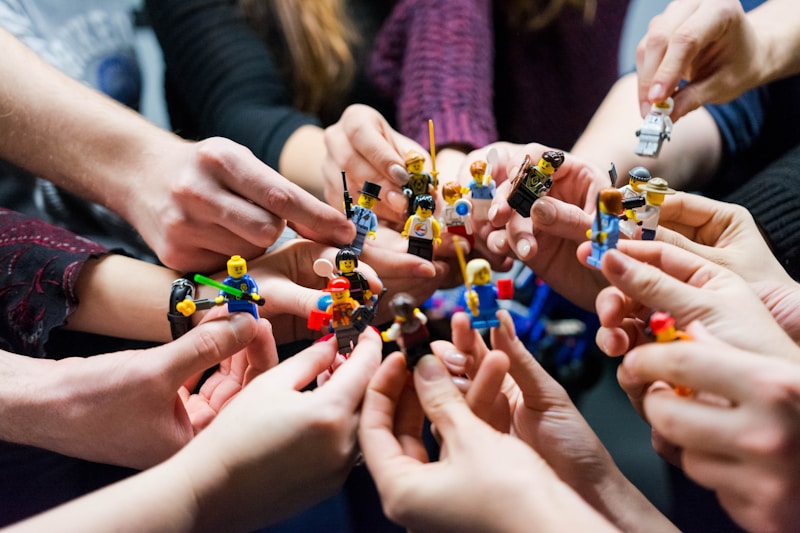The Ndebele People
Masters of Geometric Wall Art - Creators of Beaded Messages - Keepers of Brilliant Colors
Who Are the Ndebele?
The Ndebele (amaNdebele) are a Bantu-speaking people of South Africa and Zimbabwe, renowned worldwide for their spectacular geometric wall paintings and intricate beadwork. The Southern Ndebele of South Africa (approximately 1.5 million) and Northern Ndebele of Zimbabwe (2 million) share cultural heritage while developing distinct traditions. Ndebele women transformed homestead walls into brilliant canvases, creating bold geometric patterns in vivid primary colors—an artistic tradition that evolved during colonial oppression as a form of cultural resistance and communication. The iconic beaded neck rings (idzilla) and marriage blankets tell stories through color symbolism. Despite historical displacement and cultural suppression, the Ndebele have preserved and celebrated their artistic heritage, which now influences global design and contemporary African art.
Geometric Wall Painting Tradition
The Ndebele wall painting tradition (ukugiya) emerged in the early 20th century, developed by women to beautify homesteads and assert cultural identity during apartheid oppression. Using natural pigments and later commercial paints, women cover exterior walls with bold geometric patterns—triangles, chevrons, rectangles, and abstract forms in brilliant reds, blues, greens, yellows, and whites. Each woman develops her unique style, though patterns often reference architectural forms, landscapes, and modern objects like light bulbs and airplanes.
These murals serve multiple purposes: aesthetic beauty, cultural pride, and silent resistance to cultural erasure. The tradition intensified after forced removals, with elaborate paintings declaring "we are Ndebele, we endure." Grandmother passes knowledge to granddaughter, ensuring artistic continuity.
Beadwork and Symbolic Communication
Ndebele beadwork ranks among Africa's most sophisticated, with women creating elaborate ceremonial garments. The idzilla (brass or beaded neck rings) worn by married women symbolize marital status and are never removed. Young girls wear beaded aprons (iphotiya) that change design as they progress through life stages. Marriage blankets (ndabela) feature intricate geometric beadwork presented during wedding ceremonies.
Color symbolism conveys complex messages: combinations indicate family lineage, marital status, age group, and personal messages between lovers or family members. This visual language allowed communication when verbal expression was dangerous during apartheid.
Historical Origins and Migration
The Northern Ndebele of Zimbabwe emerged from Mzilikazi's breakaway from Shaka's Zulu kingdom in the 1820s. Mzilikazi led followers north, conquering territories and absorbing local populations to create the powerful Ndebele kingdom centered at Bulawayo. The British conquered this kingdom in the 1890s, but Ndebele culture persisted.
The Southern Ndebele remained in present-day South Africa, experiencing Dutch and British colonization. Apartheid policies forcibly removed Ndebele communities from ancestral lands, attempting to suppress cultural practices. This oppression paradoxically strengthened cultural expression through wall painting and beadwork.
Social Organization and Ceremonies
Traditional Ndebele society organizes patrilineally, with extended families (umkhaya) living in homesteads featuring the distinctive painted walls. Initiation ceremonies (ukuwela/wela) mark boys' and girls' transitions to adulthood, involving seclusion, education in cultural knowledge, and elaborate beadwork presentations. The Ukuthomba ceremony celebrates girls reaching womanhood, with families commissioning special beadwork and wall paintings.
Modern Ndebele Culture
Today, Ndebele art has achieved global recognition. Artists like Esther Mahlangu have exhibited worldwide, collaborated with BMW (painting Art Cars), and brought Ndebele aesthetics to international audiences. The tradition influences contemporary African design, fashion, and architecture. Cultural villages preserve traditional homesteads, allowing visitors to appreciate artistic heritage. Young Ndebele artists blend traditional geometric patterns with contemporary mediums including canvas, digital art, and murals. IsiNdebele language education programs work to preserve linguistic heritage. Annual festivals celebrate Ndebele culture through traditional dancing, singing, and artistic displays. Despite modernization, many Ndebele maintain cultural practices, with grandmothers still teaching granddaughters the sacred art of wall painting, ensuring this brilliant tradition continues inspiring future generations.
Image Gallery





